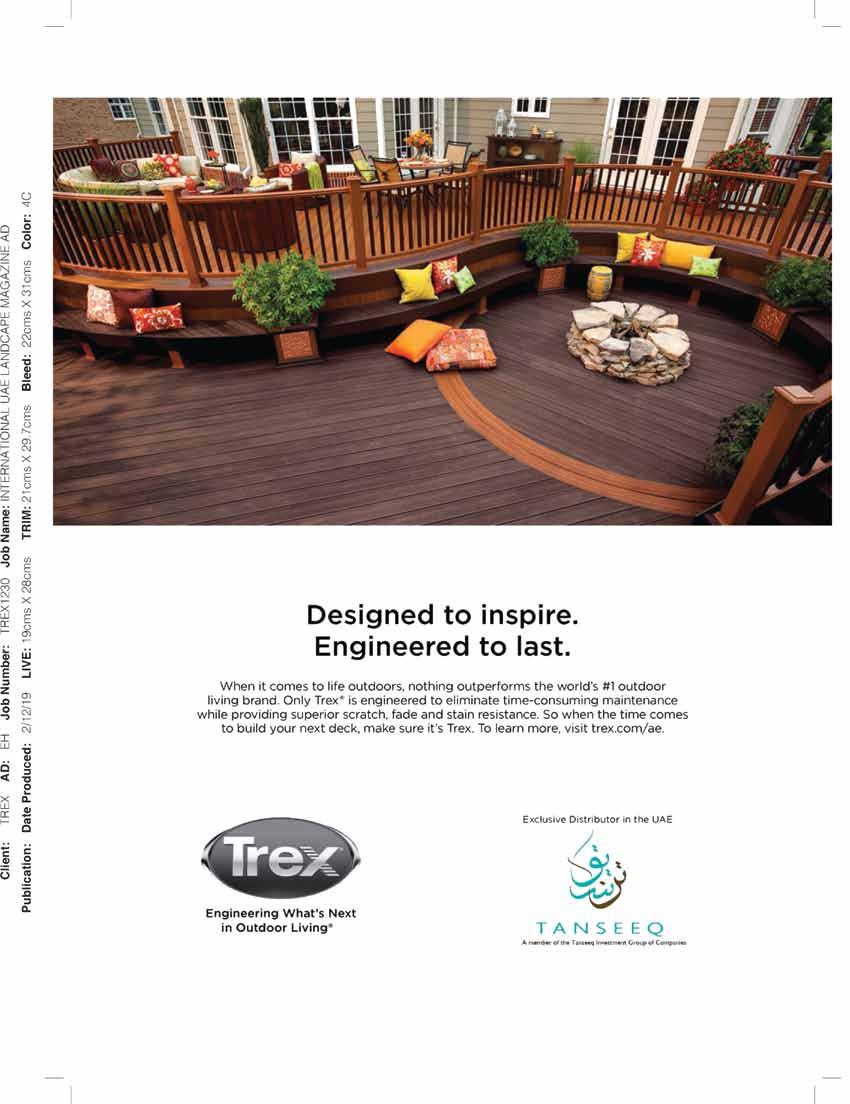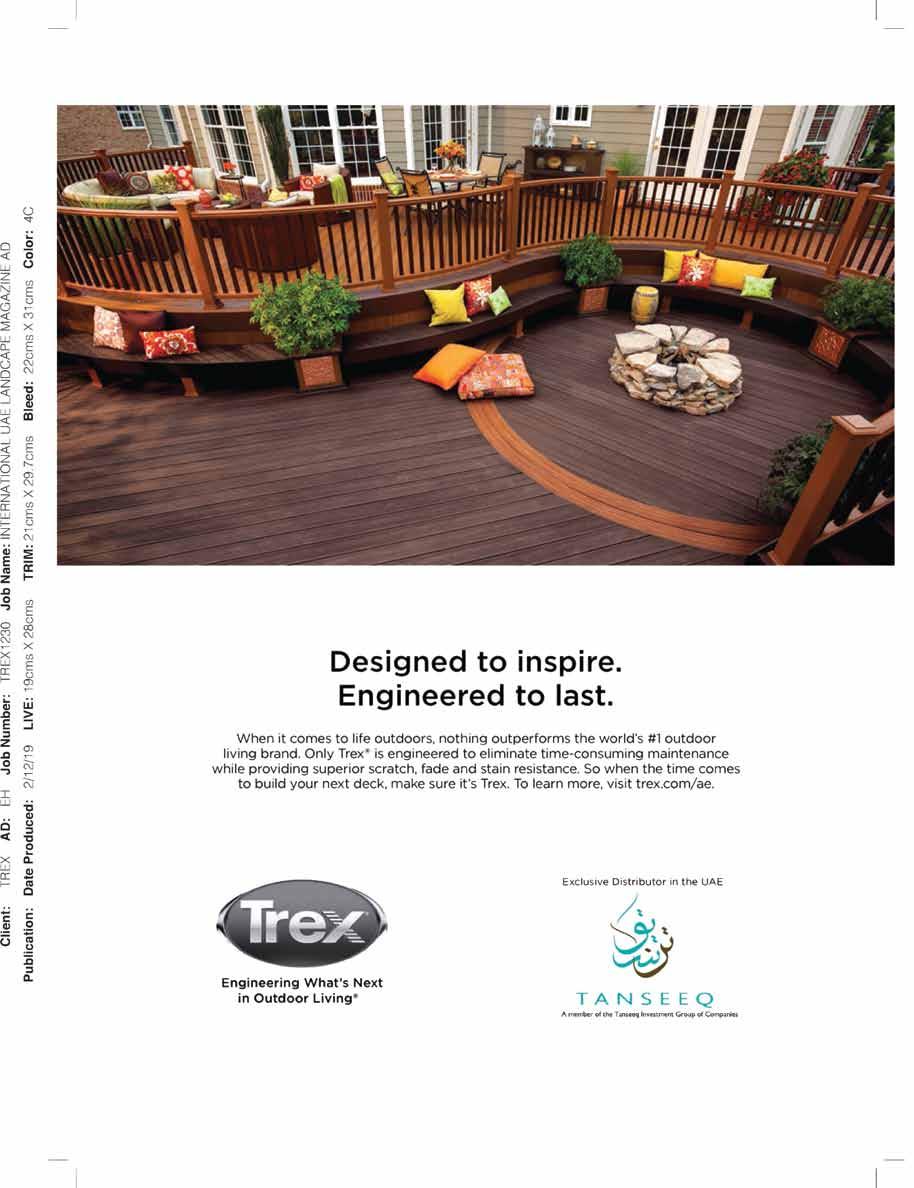
7 minute read
Spaces between the urban forms can create a community identity
By: Tina Heers Landscape Architect, InSite
How activating public spaces between the urban forms can create a community identity
Advertisement
The bright city lights, the hustle and bustle, the endless opportunities, the glitz and the glam – these can be some of the reasons that people choose big city living. What comes along with this is the ease of living in an apartment, everything is at your doorstep and often just a quick walk to the metro station, connecting occupants to the rest of the metropolis.
Those that reside in the UAE or even visiting could assume that a large percentage of the city’s population have taken up apartment living. This conclusion could be made as one looks around as you travel down any of the main highways of the country such as Sheikh Zayed Road.
In spite of this density of urbanization, apartment living is often quite isolating, as everyone retreats into their own abode. Most interactions occur when neighbours encounter one another in the elevator once every few days prompting a smile. Apartment dwellers have little choice but to retreat into their units at the end of the day since there are a lack of communal spaces to socialise and instead end up bounded within a space where the same air circulates from blasting air conditioning.
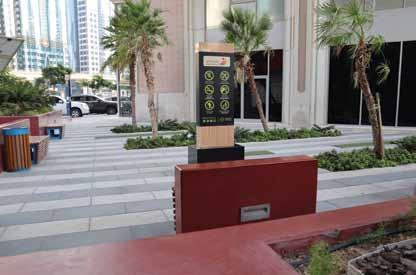
A question to ask ourselves is how we can utilise the spaces in which we live in to provide a community identity, a healthy lifestyle and a place for one to get to know their neighbours. How can we provide a place that caters to everyone in the buildings such as families, young couples and singles as well as visitors?
Through studying the downtown area of Dubai along Sheikh Zayed Road, as a starting point, it is possible to observe the spaces that surround this high rise apartment living and how to best activate and rejuvenate these empty spaces to create identity for the community and embrace the principles of a sustainable city. As you walk along the pedestrian walkway between the Financial Centre Metro Station and Emirates Towers Metro Station on the western side of Sheikh Zayed Road there are around fifteen high-rise buildings comprising of residential, hospitality, commercial, retail and F&B facilities. If you take note whilst walking along this strip how little of the space between the buildings is being used, the amount of dead space becomes apparent. This remaindered space represents a golden opportunity to remake these places for the community to gather and convene as an alternative to their apartments.
Out of these fifteen high rise buildings there are only two spaces along this stretch between the buildings that have been designed under Dubai Municipality for the local community to utilise. The first area has multiple seating areas with pops of colour, alongside planters and palm trees to soften the space. Within the same corridor-like space, a timber shade structure hovers over an artificial lawn with basic children’s play facilities. The second area along this stretch bears the same typology of the first with multiple benches for people to rest upon, although less softscape and a few more play elements which cater to older children more than the first corridor mentioned previously. The play area is not an inviting space for children to use, as the large amount of hardscape throughout the corridor comes off as sterile and harsh.
If we cross over to the eastern side of Sheikh Zayed Road, once again we will find only two areas along the stretch between the metro stations that have been designed for community within the building’s corridors. This side of Sheikh Zayed Road is the more modern side one could say, as there are a variety of iconic buildings and the prestigious DIFC area is nearby.
Walking along this side one will come along a pocket park which is markedly different to the spaces discussed along the western side of Sheikh Zayed Road. Sculptural elements, integrated seating, outdoor gym equipment and more engaging play equipment that complements each other provides comfortable and functional spaces for the community. The forms, shapes, colours and selected equipment draw attention to the space resulting in high usage of the pocket park by people of all ages.
One must ask whether providing seating areas and multiple play and gym elements is enough to create a community identity or is there more that we can be providing within these spaces? Undoubtedly interactive and functional landscapes within these spaces will bring people together to create social hubs that become part of creating a sustainable community.
The Sustainable City situated in Dubai on the Al Qudra Road has introduced urban farming as one of the ways to
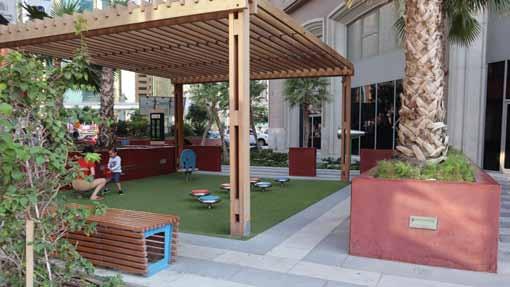
bring the community together as well as creating a selfsufficient neighbourhood.
Whilst on a smaller scale the introduction of creating biomes where possible is a great way to create community awareness, provides an opportunity for neighbours to discuss the impacts and results of urban farming and to learn about the different foods that will be grown. Since Dubai is a melting pot of so many different nationalities people from all cultures can bring their knowledge of their own cultural foods to the initiative.
A seed exchange program is another great way of for the community to interact. Since the participants take back a piece of the community landscape through the seed program to their living space while at the same time creating a social experience. The program allows members of the community to swap seeds or even plants between them to be used to grow in one’s own house, apartment or garden/ balcony. This creates a platform where the people within the community can gather and discuss what plants are working and which ones aren’t, all while creating a social hub.
Introducing green walls into these spaces between the buildings that filter the city air, lessen traffic noise and create a habitat of flora and fauna. Providing green walls can be a challenge in the region but positive outcomes can be achieved through the correct species selection and choosing
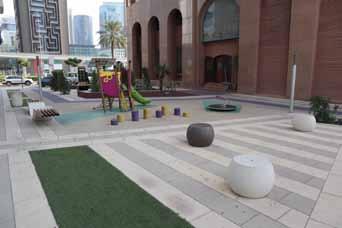
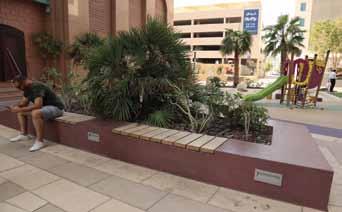

the best location for the green wall. Greening the city will add to the serenity of the community whilst providing a comfortable place for people to relax and gather.
These spaces can also act as a platform for local artists to display their works, creating another reason to bring people together. The colours of the street furniture and sculptural elements attract people to spaces while the other element of art can create an identity to each of these corridor spaces between the buildings.
The aim of creating these pocket park like spaces is to activate the interstitial corridors so there is a distinct difference between how they look in the daytime and the evening while maintaining their community identity. Adding landscape to the city and cre ating a sustainable living ecosystem where possible are also major draws. Programming of these spaces is essential in order to allow for events, performances or displays to create further interest within the corridors. Developing light installations and permanent lighting features will help to activate the spaces at night for people to gather, relax and dine whilst creating interest to passers-by.
Furthermore, the spaces between the high-rise buildings are in fact an ideal place for these activation hubs. As we live in a climate where temperatures soar above 40 degrees in the summer, these spaces act as wind tunnels and are typically shaded by the adjacent buildings therefore acting as places of refuge from the heat and sun.
Residents and the surrounding communities should feel they are adding value to their neighbourhood and by providing a place where everyone can convene to meet their neighbours and other city dwellers will help to achieve that. The idea is to learn from the interventions undertaken thus far and then to implement a strategy for the community to become more sustainable and in turn, educate people on how this can be replicated across the UAE.

